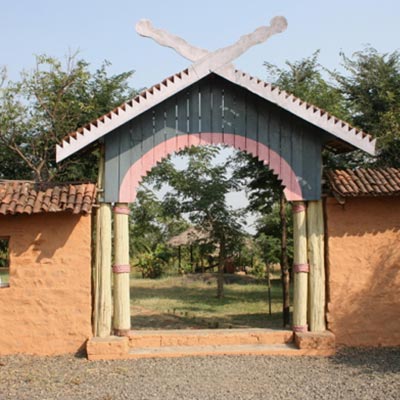Ancient Temples of Kalachuri, Madhya pradesh.
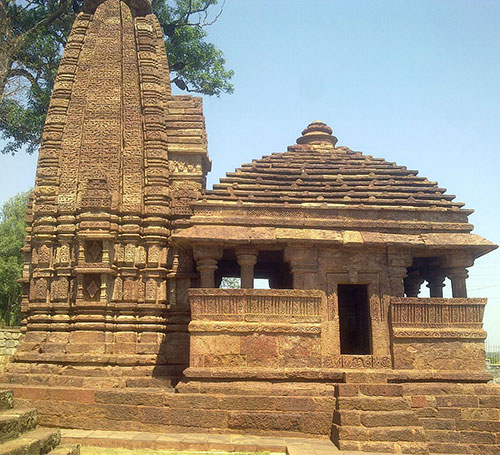
- : Amarkantak, Madhya Pradesh, Pin - 484886, India..
- : Nearest airport: Bilaspur (130.1 km); nearest railway station: Pendra Road (33.3 km)..
- : Every day from 5.30 am to 5.30 pm.
- : 1 hour..
- : October to March..
- : Many budget and luxury hotels, resorts are available here..
 Basic info
Basic info
The ancient town of Amarkantak, also known as Tirtharaj or the King of Pilgrimage, is famous for its magnificent historic temples and pilgrimage sites. This town is located at the junction of the three mighty mountain ranges – Satpuras, Vindhyas, and Maikal. This is also the site of the confluence of three rivers – the Narmada, Son, and Johila Rivers. The ancient temples of Kalachuri date back to the Kalachuri Period when Kalachuri Maharaja Karnadeva constructed these group of temples between 1042 AD and 1072 AD. This temple complex houses a number of ancient temples that are some finest examples of architectural wonder. Many of the Kalchuri temples are constructed following the Nagara style of architecture. The lavishly decorated shikharas and mandaps of the temples are praiseworthy. Some of the well-known temples in the complex are – Pataleshwar Mahadev Temple, also known as Surajkund, which is considered to have been founded by Adi Shankaracharya, Machhendranath Temple, Keshav Narayana Temple, which was constructed by the Bhonsle ruler of Nagpur in the 18th century, Johila Temple, Pancha Math Temple, etc. The largest temple in the complex is the Karna Temple. The location of these temples is the southern direction behind the Narmadakund, opposite to the Narmada Udgam Temple. These temples are preserved and maintained by the Archaeological Survey of India. The temple complex is very well maintained and adorned with lush green lawns and landscaped gardens.
 Tourist attractions
Tourist attractions
You could visit the nearby tourist spots like the Shri Yantra Mahameru Temple, Narmada Mai Temple, Narmadakund, Shri Jwaleshwar Mahadev Temple, Son Udgam Temple, Amareshwar Mahadev Temple, Sri Digamber Jain Temple, Kabir Chabutra, Durga Dhara Waterfall, Kapil Dhara Waterfall, etc.
Annapurna Temple, Madhya pradesh.
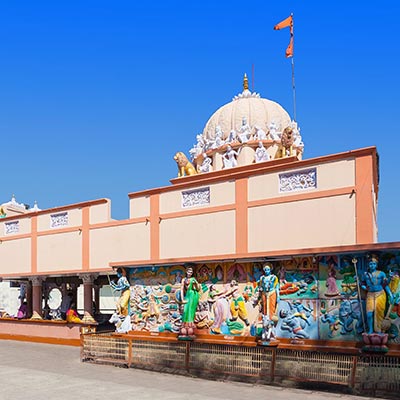
- : Annapurna Mandir, Kranti Kriplani Nagar, Indore, Madhya Pradesh 452009.
- : You can reach here using public transport..
- : All days of the week, 5:00 AM - 12:00 PM & 2:00 PM - 10:00 PM
- : 30 mins.
- : October to March.
- : Budget & Luxury Hotels are available..
 Basic info
Basic info
Annapurna Temple is one of the most important temples in Indore. Dedicated to the Goddess Annapurna, the deity of food, the temple has brilliant architecture. The four life-sized statues of elephants decorate the exteriors of the temple. The temple also has shrines of Sivan, Hanuman, and Kalabhairava.
Bandhavgarh National Park, Madhya pradesh.
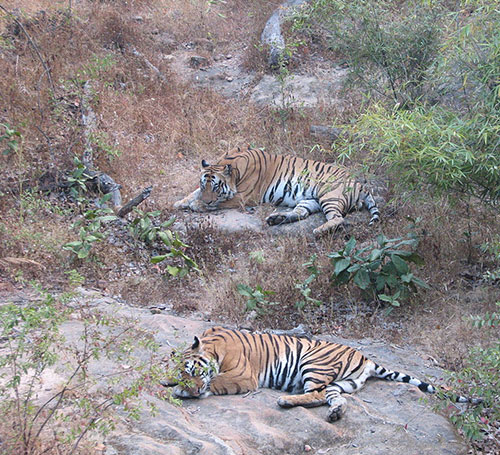
- : Bandhavgarh, Umaria District, Madhya Pradesh, Pin - 484661, India..
- : Nearest Railway Station: Umaria (33 km) & Nearest Airport: Jabalpur (158.1 km)..
- : Morning Safari 6 AM - 10:30 AM, Afternoon Safari 3:00 PM – 5.30 PM (Thursday to Tuesday); 6.30 am – 11 am (Wednesday).
- : 2 to 3 hours..
- : open for visitors from 1st October to 30th June..
- : Many budget and luxury hotels, resorts are available here..
 Basic info
Basic info
A very popular wildlife sanctuary, Bandhavgarh National Park, also known as the Land of Tigers, is located in the area of Vindhya Hill Forest range. The total natural forest area is around 450 sq. km and the declared National Park covers around 105 square Km. In 1968, a special buffer forest area was declared as Bandhavgarh National Park to protect and preserve the large biodiversity and wildlife. Including the Umaria and Katni forest division, the covered area is around 840 sq. km. Previously, different rulers managed and used the forest area for different purposes but now, the National Park is managed by the Madhya Pradesh Forest Department. This National Park has four main sectors covering almost 716 sq. km - Tala Zone, Magdhi Zone, Khitauli Zone, and Panpatha Zone among which, the Tala Zone is mostly famous for the Royal Bengal Tigers and White Tigers, which are the biggest attraction among the tourists. This National Park is also famous for the rich availability of different species of animals, around 37 species of mammals, 250 species of birds, about 80 species of butterflies, different types of vegetation, and many more. According to a Tiger Population Survey in 2012, the park has around 55 tigers making it a high-density tiger forest.
 Tourist attractions
Tourist attractions
● The main tourist attraction of this place is Jungle Safari by canter or jeep ride, which is organized every day (except Wednesday) twice, in morning and evening.
● The Elephant Safari also popular in this park, is arranged by the Forest Department every morning.
● Another popular attraction is the Bandhavgarh Fort, situated in this National Park, located amidst 32 hills and is surrounded by many natural caves.
Bharat Bhavan, Madhya pradesh.
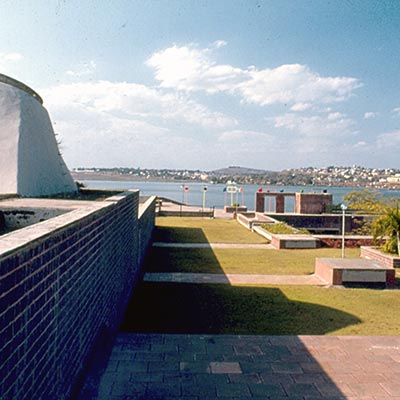
- : Bharat Bhawan Rd, Near Upper Lake, Krishna Nagar, Shymala Hills, Bhopal, Madhya Pradesh 462013.
- : Located near Kilol Park, Bharat Bhavan is easily accessible from all points of the city via a taxi or Rickshaw. .
- : 2:00 PM - 8:00 PM (Feb - Oct) 1:00 PM - 7:00 PM (Nov - Jan) (Mondays closed)
- : 1-2 hrs.
- : October to March.
- : Budget & Luxury Hotels available..
 Basic info
Basic info
Bharat Bhavan is a museum and multi-art complex in Bhopal. Funded by the Government of India, the museum has an art gallery, an open-air amphitheater, an auditorium, libraries, a fine art workshop, a studio theatre, a museum tribal and folk art, etc. All these things have made the museum a major tourist attraction of the capital city of Madhya Pradesh. Hence, one must visit this place to know more about the art, culture, and heritage of the region.
Birla Museum, Madhya pradesh.
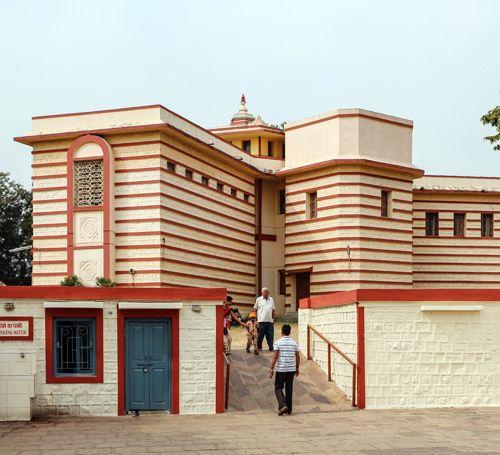
- : Arera Hills Road, Bhopal, Madhya Pradesh, Pin - 462011, India..
- : Nearest Railway Station:- Bhopal Junction - 4.7 km & Nearest Airport:- Raja Bhoj Airport - 14.8 km..
- : 10 am - 7 pm, all days of the week except Mondays and Government holidays.
- : 2 hours..
- : can be visited throughout the year..
- : Budget and luxury hotels, resorts are available here..
 Basic info
Basic info
The famous Birla Museum located in the center of the ?City of Lake? Bhopal, capital of Madhya Pradesh, was built in 1971. The museum building is a part of the main Birla Temple complex, built by the Birla family. The Mandir complex has two temples, one Lakshmi Narayan Temple and other is Shiva Parvati Temple. Every tourist traveling to Bhopal should visit the Birla Museum, as this archaeological museum has tons of interesting and revealing artifacts of immense historical importance depicting not only the history of Madhya Pradesh but India as well. Coins of different eras, Terracotta sculptures, historical manuscripts, images, paintings, stone sculptures, etc., which were collected from different archaeological sites are displayed here. The stone sculptures exhibited here belong to the period of 7th century to 13th century. You will also find Terracotta structures and coins in this museum that date back to the 2nd century BC and 6th century AD. This is the only museum in Bhopal, where two different holistic galleries are available for display, namely Lord Shiva and Lord Vishnu, which are located on the right side of the main entrance. Furthermore, you can see the equipment and apparatus that were used by the people during the Neolithic and Palaeolithic Ages. Also, you will find some evidence and ancient articles of prehistoric eras. Especially, the historians and archaeologists come here throughout the year from different corners of the world to gather information for their research work and to quench their thirst for knowledge.
Some other popular tourist places like Tribal Museum, Lakshmi Narayan Temple, Museum of Natural History, State Museum of Madhya Pradesh, Snow Mastiii, etc. are close to the Birla Museum, where the visitors can also visit.
Buddhist Monuments, Madhya pradesh.
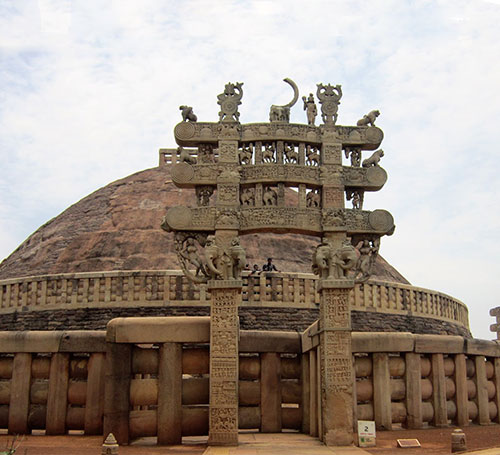
- : Sanchi, Madhya Pradesh, Pin - 464661, India..
- : Nearest airport is Bhopal (46 km); nearest railway station is Sanchi (1 km)..
- : 8.30 am to 5:30 pm (all days of the week).
- : 2 - 3 hours..
- : between November and March..
- : Many budget and luxury hotels, resorts are available here..
 Basic info
Basic info
The Buddhist Monuments at Sanchi have been declared as a cultural UNESCO World Heritage Site. Built in the 3rd century BC, these monuments reflect the priceless beauty of Buddhist art and architecture. This site was discovered by the British Army in the year 1818. Though the relics were discovered in ruins, the glory of the monuments still shines through. The shrines, monasteries, and stupas present in this complex also depict the Mauryan art and architecture. The relics of Lord Buddha and his sermons have been inscribed on the walls of the stupas.
When the Mauryan King Ashoka embraced Buddhism in 250 BC, he constructed the first stupa at Sanchi. This great Sanchi Stupa was built for paying homage to Lord Buddha. In the later years, Ashoka built many other stupas. During the reign of the Shunga Dynasty, the Sanchi Stupa was remodeled and staircases and railings were added. Beautiful carvings and fine motifs prettify the railings and gates of the stupa. The four intricately decorated gateways of the stupa face the four directions. An ornamental balustrade surrounding the stupa was added during the rule of the Satavahana Dynasty.
One of the striking features of the stupas is that there are no images of Lord Buddha. Instead, he has been depicted in the form of symbols of footprints, thrones, and wheels.
 Tourist attractions
Tourist attractions
The lush green gardens surrounding the Sanchi Stupa are very welcoming when one wants to take rest in the lap of nature. History and archaeology lovers must pay a visit to the Sanchi Stupa Museum present here.
Chanderi Fort, Madhya pradesh.
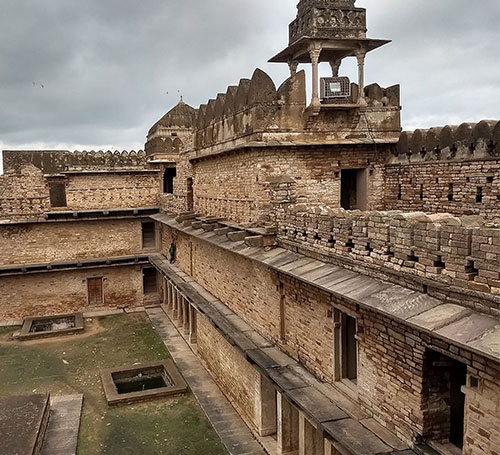
- : Chanderi, Ashoknagar District, Madhya Pradesh, Pin - 473446, India..
- : Nearest airport is Gwalior (219.9 km); nearest railway station is Lalitpur (38.9 km)..
- : All days of the week from 6.30 am to 6 pm.
- : Around 2 hours..
- : The winter months of October to February are ideal for a visit..
- : Many budget and luxury hotels, resorts are available here..
 Basic info
Basic info
Chanderi Fort stands on a hillock, which is 71 meters above the town of Chanderi. According to an inscription, this fort was built by the Pratihara King, Kirti Pal in the 11th century, and was known as Kirti Durg at that time. The original fort was modified by Alauddin Khilji and then by the Mughal Emperor, Babar. The palaces inside the fort were built by the Bundela Chiefs.
There are three gates to the fort. The first gate is the famous gate, known as Khooni Darwaza. The reason behind the name is, during the rule of the Sultan of Malwa, prisoners were thrown from above and their crushed bodies were displayed at the gate and hence, the menacing name. Hawa Paur is the other gate of this fort. There is one more gate on the south-western side of the fort, known as Khatti Ghatti, which is decorated by sloping towers.
During Babar’s quest, a number of Rajput ladies performed Jauhar and a monument has been erected to commemorate this sacrifice, which is known as the Johar Smarak. There is a stone plaque near the Smarak, which gives a description of the Jauhar scene.
There is a three-storeyed palace inside the fort, which has bastions and watch-towers at its corners. There is also a Khilji Mosque built inside the fort, where verses from the Quran have been inscribed on the walls.
 Tourist attractions
Tourist attractions
The ruins of Hawa Mahal and Nua- khanda Mahal located inside the fort are the popular tourist attractions. From the top of the fort, tourists can enjoy a complete view of the beautiful ancient city of Chanderi.
Chaturbhuj Temple, Madhya pradesh.
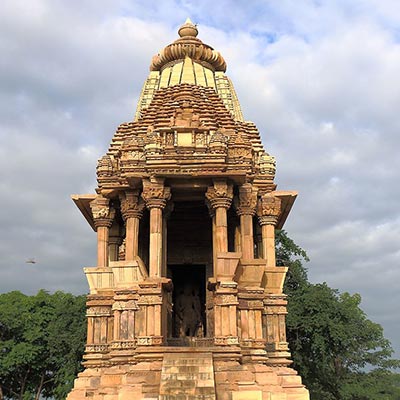
- : Sevagram, Khajuraho, Madhya Pradesh 471606.
- : The nearest airport is Khajuraho airport which is located at a distance of 170 kms. You can hire a cab or board a bus to reach the temple..
- : 5:30 am to 6:30 pm, daily
- : 20 to 30 mins.
- : Late October to early March.
- : Luxuries to budget hotels are available..
 Basic info
Basic info
Dedicated to the four-armed Lord Vishnu, Chaturbhuj Temple is a magnificent temple, dating back to 1100 A.D. in Khajuraho, Madhya Pradesh. Also known as Jatakari, it is the one temple in Khajuraho, not having any erotic sculptures. Considered as a part of the Southern Group of Temples, the temple was built by Yasovarman of the Chandela dynasty.
Chausath Yogini temple, Madhya pradesh.
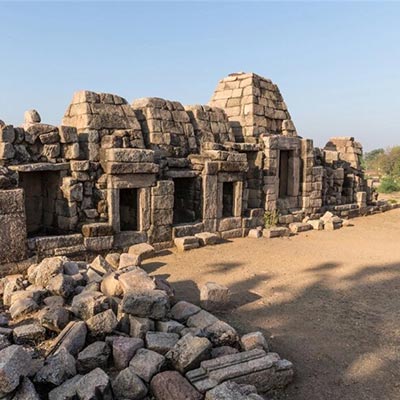
- : Sevagram, Khajuraho, Madhya Pradesh 471606.
- : This temple can be easily reached from various areas of Madhya Pradesh and other parts of the country, through road, rail and air. .
- : 7:00 AM - 8:30 PM
- : It takes approximately 1 to 2 hours to visit through all spots of the temple..
- : The ideal time to visit Khajuraho is between the months of July and March..
- : Budget & Luxury Hotels available..
 Basic info
Basic info
Chausath Yogini temple is a ruined temple in Khajuraho, dating back to the late 9th century. Considered as the oldest surviving temple in the town, it is quite different from other Chausath Yogini temples as it has a rectangular plan. As the temple is in ruins now, it does not have any sculpture. Three large statues (Brahmani, Maheshvari, and Hingalaja) were found in the ruins. These have been preserved in the Khajuraho museum.
Chitragupta temple, Madhya pradesh.
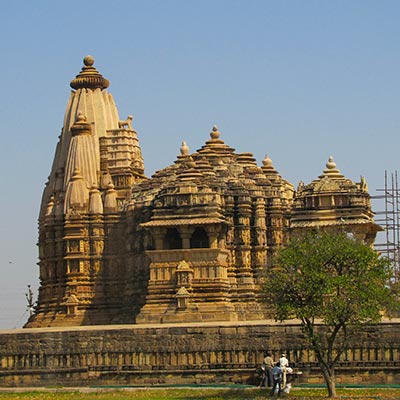
- : Chhatarpur District, Khajuraho, Chhatarpur, Madhya Pradesh, 471606, India.
- : The place is well-connected via all means of local transportation..
- : 5:00 AM - 12:00 PM and 4:00 PM - 9:00 PM
- : 30 minutes to 2 hours.
- : October-March..
- : Budget & Luxury Hotels are available..
 Basic info
Basic info
Chitragupta temple is the 11th-century temple dedicated to Surya in Khajuraho, Madhya Pradesh. In terms of architecture, it resembles the nearby Jagadambi temple. As the temple has an ornate octagonal ceiling, it is believed that the temple was constructed slightly after the Jagadambi temple. Moreover, the exteriors of the temple are decorated with erotic carvings.
Dargah Hazrat Khwaja Khanoon, Madhya pradesh.
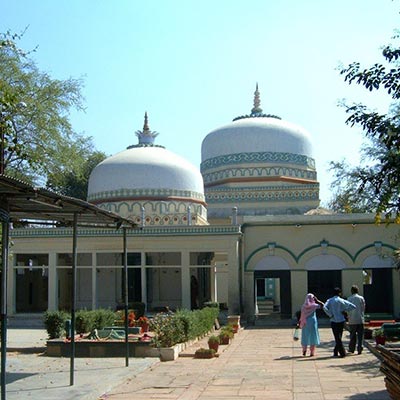
- : Kila Gate Rd, Dwarkapuri, Lashkar, Gwalior, Madhya Pradesh 474002.
- : The dargah is around 14 km from Rajmata Vijay Raje Scindia Airport Gwalior and around 1.8 km from Gwalior Junction station and 3.1 km from Gwalior Bus Stand..
- : 6 AM to 10 PM
- : 1-2 hours.
- : October to April.
- : Luxuries to budget hotels are available..
 Basic info
Basic info
Built in the memory of Khwaja Kanoon Sahib Nagauri, Dargah Hazrat Khwaja Khanoon Sahib is a holy shrine of Muslims in Gwalior, Madhya Pradesh. His full name, Saiyed Saiyeeduddin Kanoon Rehmat Ullah Aleh chishtiya is inscribed on the dome of the dargah. It is believed that visiting the dargah for consecutive 40 days fulfills all desires.
Devi Jagadambi Temple, Madhya pradesh.
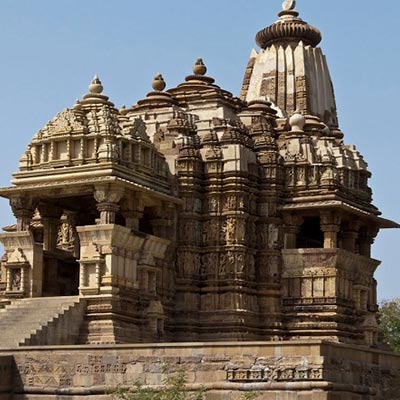
- : Rajnagar Rd, Sevagram, Khajuraho, Madhya Pradesh 471606.
- : The nearest railhead is the Khajuraho Railway Station at a distance of 9 km from the temple.
The nearest airport is the Khajuraho Airport at a distance of 9.2 km from the temple.. - : Sunrise to Sunset
- : .
- : October to March.
- : Budget & Luxury Hotels available..
 Basic info
Basic info
Also referred to as Jagadambika Temple, Devi Jagadambi Temple is a group of 25 temples in Khajuraho, Madhya Pradesh. It is a temple in a group to the north of the complex, having beautiful decorations and numerous erotic carvings. Named after the Goddess Jagdamba, the temple is dedicated to her (a Hindu goddess) only.
Dhuandhar Falls, Madhya pradesh.
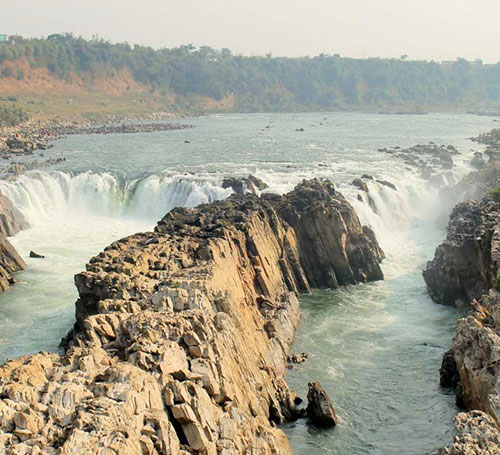
- : Bhedaghat, Near Jabalpur, Jabalpur District, Madhya Pradesh, Pin – 482003, India..
- : Nearest airport: Jabalpur (38.9 km); nearest railway station: Howbagh Jabalpur (22.9 km)..
- : All days from 6.30 am to 8.30 pm.
- : 1 - 2 hours..
- : best time to visit is from mid-October to mid-March..
- : Many budget and luxury hotels, resorts are available here..
 Basic info
Basic info
“Dhuan” is a Hindi word, which means “smoke” and “dhar” means a steadily flowing stream of water. This waterfall, located at Bhedaghat, is so called because it’s a huge waterfall that cascades forcefully from an imposing height of 30 m and looks like a gush of white smoke creating a mass of mist when its water touches the surface. The water of the mighty river Narmada flows in the form of this stunning waterfall. There are viewing platforms built with railings along the side of the waterfall to facilitate the tourist get spectacular views of the spot.
In order to enhance the white beauty of the waterfall, a bed of white and grey marble has been created under the water surface. This waterfall can be accessed from both the eastern and western banks of Narmada River. The marble rocks of the Dhuandhar waterfall are very famous among tourists worldwide. This waterfall looks like a giant silver cascade when the silvery moonlight falls on its sparkling water.
 Tourist attractions
Tourist attractions
- Boat riding.
- Riding cable car or ropeway.
- Family picnics.
- Buying marble statues and other items from the nearby vendors.
Gommatagiri Digambar Jain Temple, Madhya pradesh.
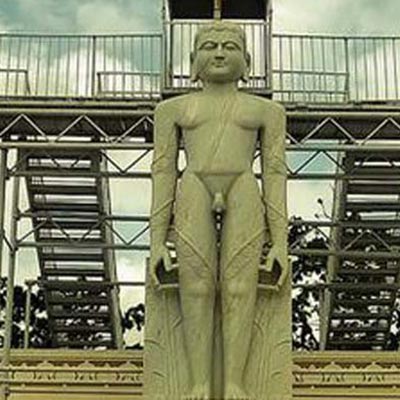
- : Major district Road, Indore, Madhya Pradesh 257112.
- : Taxis or auto-rickshaws are the preferred mode of transport to reach there..
- : 5:00 AM - 8:00 PM
- : 30 min -1 Hour.
- : October to April.
- : Budget & Luxury Hotels are available..
 Basic info
Basic info
Perched on a hill, Gommatagiri Digambar Jain Temple is a pilgrimage site for the devotees of Jainism (Digambar sect). The hillock has a 21 feet statue of Gomateshwara. It is said to be a replica of the Bahubali statue at Shravanabelagola. Besides providing mental peace, the attraction offers scenic views of the sunrise and sunset. Gommatgiri also has 24 marble temples, each dedicated to one of 24 Jain Tirthankaras. Moreover, the temple complex offers various facilities such as accommodation, meals, etc. to visitors.
Gopachal Parvat, Madhya pradesh.
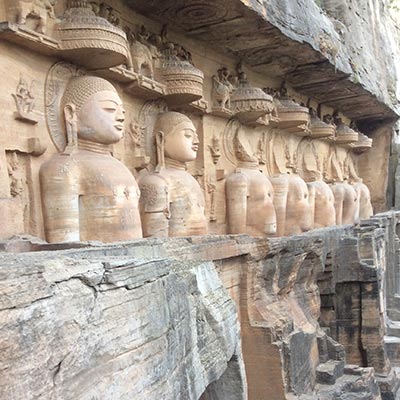
- : Phulbagh Rd, Gopachal Marg, Lashkar, Gwalior, Madhya Pradesh 474002.
- : The nearest railway station is the Gwalior Train Junction. The nearest airport is the Maharajpur Air force Base Airport..
- : 24 hours
- : 1 hour.
- : October to March.
- : Luxuries to budget hotels are available..
 Basic info
Basic info
Gopachal Parvat refers to an isolated rocky hill in Gwalior. Along with the mighty Gwalior Fort, the hill has several rock-cut Jain monuments. The group of Jain carvings dates back to the 7th and 15th centuries. The intricate carvings around the Gwalior Fort portray Jain Tirthankaras in Padmasana (seated posture) and Kayotsarga (standing yogic posture). The monuments are categorized into five groups, namely South East Group (Gopachal Atishya Kshetra), South West Group (Trishalagiri), Urvahi Group, North West Group (Naminath Giri), and North East Group (Naimgir). It is also believed in Jainism that Tirthankara Parshvanatha delivered his discourse on Gopachal Parvat.
Gwalior Fort, Madhya pradesh.
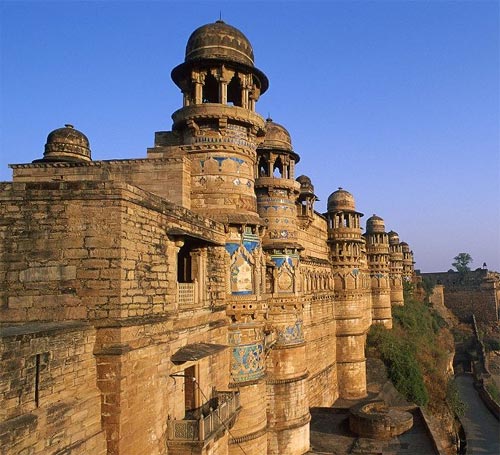
- : Gwalior, Madhya Pradesh, Pin - 474008, India..
- : Nearest Railway Station: Gwalior - 4.3 km & Nearest Airport: Gwalior - 12.2 km..
- : 6 am - 5.30 pm, all days a week, closed on Public Holidays.
- : 2 to 3 hours.
- : October to March is the best season to visit..
- : Many budget and luxury hotels, resorts are available here..
 Basic info
Basic info
Gwalior Fort, also called "Gwalior Qila" is situated at the top of a hill named Gopachal near Gwalior, Madhya Pradesh. It is said that, in 3 CE, local king Suraj Sen built this fort. Later, the fort was conquered by different rulers at different times like Maan Singh, Sikander Lodi, Ibrahim Lodi, Mughal Emperor Babur, Sher Shah Suri, and many more. In 1558, again Akbar conquered the fort, and from 1780, the British East India Company ruled over the fort. After Independence, the Archaeological Survey of India took care of this historical fort. The main fort complex has two parts, Gujari Mahal and Maan Mandir, built in the middle of 14th century by Man Singh Tomar. At present, the Gujari Mahal has been converted into a historical museum, which was created for Gujar Queen Mrignayani. The fort covers around 3 sq. km area and the height is around 35 feet. This well-maintained complex has many magnificent monuments inside - temples, palaces, etc., which were constructed at different eras by different rulers - Man Mandir, Shah Jahan, Gujari, Jahangir, Karan Singh, etc. In the complex, there are two gates, one is on the northeast side, called Elephant gate and another is on the southwest, called Badalgarh Gate. There is a large water tank with the capacity of storing 15,000 soldiers? drinking water. Another tourist attraction is, around 1500 idols of Jain Tirthankaras, sculpted during the 15th century. The highest 42-feet idol is of Bhawan Parasvanath. A temple of Lord Vishnu is also situated here, called Sas Bahu Temple.
 Tourist attractions
Tourist attractions
Man Mandir Palace, Sas Bahu Temple, Vikram Mahal, Karn Mahal, Jai Vilas Palace, Gujari Mahal (Archaeological State Museum), Teli Ka Mandir, Gurudwara Data Bandi Chhor, Tomb of Tansen, etc.
Every evening you can participate in the marvelous show of sound and lights that is held in the auditorium of Man Mandir, hosted by the fort administrators.
Gwalior Zoo, Madhya pradesh.
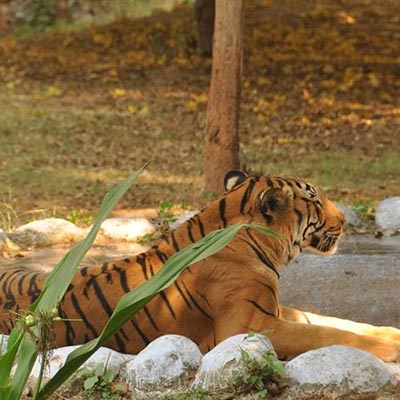
- : Italian Garden Road, Phool Bagh Rd, Lashkar, Gwalior, Madhya Pradesh 474007.
- : The Zoo is easily accessible via local transport as well as a personal vehicle. .
- : 10:30 AM - 5:00 PM (closed on Friday)
- : 2-3 hrs.
- : October-March..
- : Many budget and luxury hotels, resorts are available here..
 Basic info
Basic info
Also called Gandhi Zoo, Gwalior Zoo is a zoological park in Gwalior. It was built in 1922 by the royal family Madhav Rao Scindia. The zoo forms an integral part of a larger garden, Phool Bagh. The zoo is home to various rare species of animals, including sambar, bison, hyena, spotted deer, white tiger, etc. In all, a zoo is a perfect place for wildlife lovers as well as kids.
Indore Museum, Madhya pradesh.
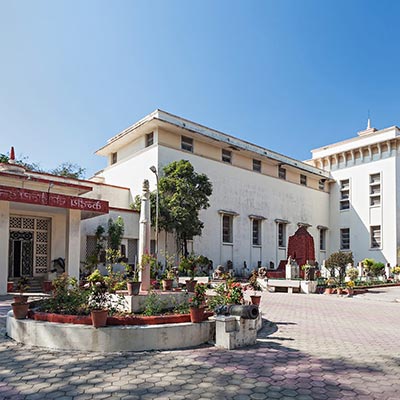
- : Near GPO Square, Navlakha, Indore, Madhya Pradesh 452001, India.
- : The museum is located close to the GPO in the city, the attraction is very easily accessible by all modes of transport..
- : 10:00 AM - 5:00 PM
- : 2 hour.
- : October to March.
- : Budget & Luxury Hotels available..
 Basic info
Basic info
Established on 1st October 1929, Indore Museum is a museum located in Indore, Madhya Pradesh. Also called the Central Museum, the museum has two galleries. Situated near the General Post Office in the town, the museum preserves the antiquities of the former Holkar State.
Jahaz Mahal, Madhya pradesh.
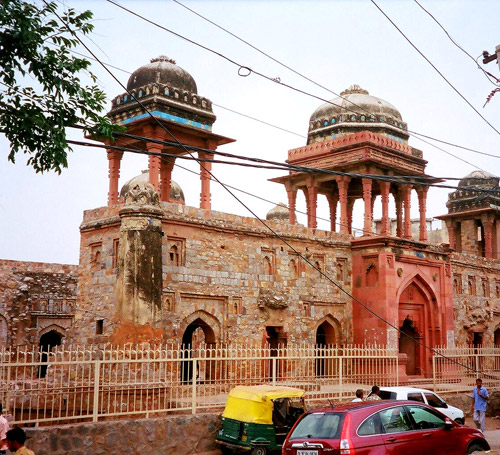
- : Jahaz Mahal Internal Road, Sulibardi, Mandav, Madhya Pradesh, Pin - 454010, India.
- : Nearest Railway Station – Dr. Ambedkar Nagar (MHOW) – 66.2 km & Nearest Airport – Devi Ahilya Bai Holkar Airport – 59 km..
- : 6 am – 7 pm, all days of the week.
- : 1 - 2 hour..
- : July to March, winter and monsoon are the best seasons to visit..
- : Many budget and luxury hotels, resorts are available here..
 Basic info
Basic info
The famous historical monument, Jahaz Mahal is located in the city of Mandu, Madhya Pradesh also known as “Ship Palace”, it is a part of Mandu Fort complex. This monument was constructed in the second half of the 15th century by the Sultan of Mandu, Ghiyas-ud-din-Khilji and is considered as a remarkable construction of the Khilji Dynasty. The purpose of constructing this building was to accommodate Khilji’s 15,000 consorts. This Mahal is situated on the land between two water bodies namely, Munj Talao and Kapur Talao, in the east and west side respectively. That is why the building is called “Ship Palace”, where “Jahaz” means “Ship” and “Mahal” means “Palace”. The design of this building is a fine unification of different architectural styles like Afghan, Hindu, Mesopotamian, Mughal, etc. The rectangular shaped Jahaz Mahal is around 110 meters in length and the width is around 15 meters. It is a two-storied building, surrounded by lake water, situated on a narrow belt of land. The main entrance of this building located on the eastern side is made by two overhanging stone brackets. In the ground floor of this structure, there are three huge halls with attached balconies adjacent to the lake. All the rooms, corridors, and windows were designed in such a way that the outsiders could not take a peep inside the royal harem.
 Tourist attractions
Tourist attractions
Other important tourist attractions of Mandu Fort complex area are Rewa Kund, Jami Masjid, Hindola Mahal, Baz Bahadur’s Palace, Roopmati’s Pavilion, Jain temple, Ashrafi Mahal, Hoshang Shah Tomb, Dai Ka Mahal, Darya Khan’s Tomb, etc.
Jai Vilas Palace, Madhya pradesh.
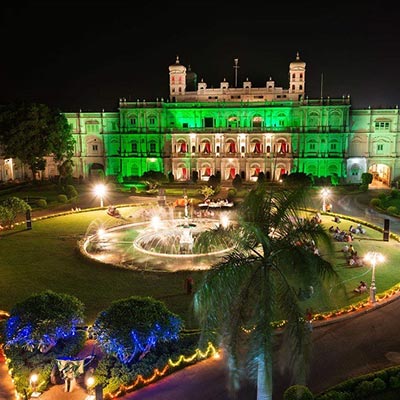
- : Jai Vilas Palace, Gwalior 474001, India.
- : The nearest railway station is Gwalior Junction, at a distance of 2 km from the attraction..
- : April to September: 10:00 AM - 4:45 PM, October to March: 10:00 AM - 4:30 PM (Closed on Wednesdays)
- : 2-3 hrs.
- : October to March.
- : Budget & Luxury Hotels available..
 Basic info
Basic info
Also referred to as the Jai Vilas Mahal, Jai Vilas Palace is the 19th-century palace in Gwalior, Madhya Pradesh. It was built by Maharajadhiraja Shrimant Jayajirao Scindia Alijah Bahadur in 1874. Though the majority of the palace is recognized as Jiwajirao Scindia Museum, a certain portion of the palace still inhabits the descendants of the former royal Maratha Scindia dynasty. Designed by Sir Michael Filose, it is an exquisite example of European architecture. The first story of the palace is built in the Tuscan architectural style while the second in Italian – Doric and the third in Corinthian. The major attraction of the palace is its durbar hall.
Javari Temple, Madhya pradesh.
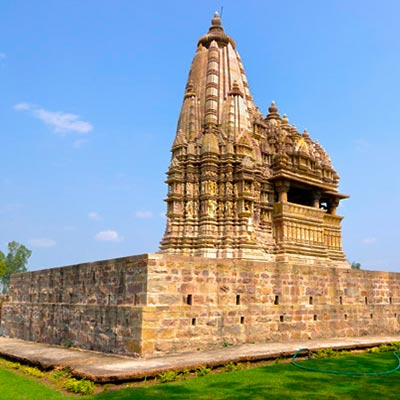
- : Eastern Group of Temples, Sevagram, Khajuraho, Madhya Pradesh 471606.
- : Private Vehicles/Cabs.
- : 8am-8pm
- : 30 minutes to 45 minutes.
- : October-March..
- : Budget & Luxury Hotels available..
 Basic info
Basic info
Established between c. 975 and 1100 A.D., Javari Temple is a Hindu Temple dedicated to Lord Vishnu. Featuring the broken and headless idol of the deity, the temple is situated in the eastern region of the town. The sculptures portray Navagraha on the top at the entrance gate of the sanctum. It also has sculptures of Lord Vishnu, Lord Brahma, and Lord Shiva.
Kandariya Mahadev Temple, Madhya pradesh.
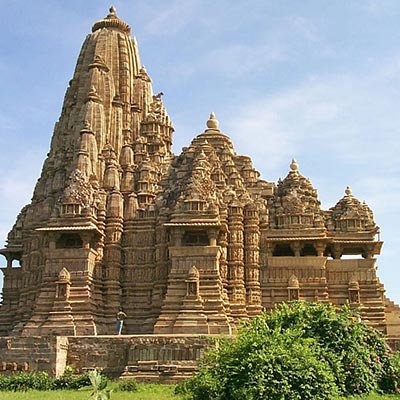
- : Western Temples, Khajuraho, Chhatarpur, Madhya Pradesh, 471606, India.
- : Nearest airport is Khajuraho Airport 5.5 km & Nearest Railway Station is Khajuraho which is 8.5 km away..
- : 5:00 AM to 12: 00 PM in morning 4:00 PM to 9:00 PM in evening
- : 1 hour.
- : October-March..
- : Many budget and luxury hotels, resorts are available here..
 Basic info
Basic info
Kandariya Mahadeva Temple is the largest and most ornate Hindu temple located in Khajuraho, Madhya Pradesh. It is considered as one of the best temples dating back to the medieval period. Situated in the Chhatarpur district of Madhya Pradesh, the temple is spread across an area of 6 sq. km. Dedicated to Lord Shiva, the temple has intricately designed patterns. The temple is built in the shape of a steep mountain, resembling the Mount Meru. As tall as 31 m in height, the temple is in the western complex.
Kanha Tiger Reserve, Madhya pradesh.
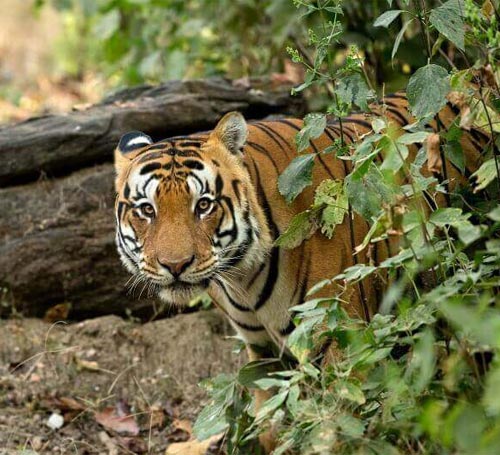
- : Nehru Smarat, Mandla, Madhya Pradesh, Pin - 481768, India..
- : Nearest airport is Jabalpur (157.7 km); nearest railway station is Gondia Junction (122. 7 km)..
- : All days of the week from 8 am to 10 pm.
- : 3 - 4 hours..
- : The period from October - June is the best time to visit the national park..
- : Camps, lodges, hotels, and resorts are the accommodation options..
 Basic info
Basic info
Kanha Tiger Reserve, also known as Kanha National Park, is the largest national park in the state of Madhya Pradesh. It was created in the year 1933 when it was divided into two wildlife sanctuaries – Hallon (250 sq. km) and Banjar (300 sq. km), and later on 1st June 1955, it was declared a National Park and a tiger reserve in 1973, which occupies an area of 940 sq. km. This national park came into the limelight when it was successfully able to preserve the rare Swamp Deer and thus, saved it from getting extinct. It is considered to be one of the best- administered parks in the whole of Asia.
The wildlife species, which can be spotted in the park include Jackals, Sambhar, Gaurs, Royal Bengal Tigers, Sloth Bears, Leopards, Wild Pigs, and many others. Sal trees, bamboo forests, and green meadows consist of the flora of the park. Around 350 species of flora and birds are found in this park. It is this wildlife park, which offered inspiration to Rudyard Kipling for writing his novel, “The Jungle Book”.
 Tourist attractions
Tourist attractions
There is a museum in the park, known as the Kanha Museum, where you can get documentation about the flora and fauna species present in the park. A major spot of tourist attraction is Bamni Dadar, which is the sunset point and also, many birds of prey can be spotted in this area. It offers such a view of the natural splendor of the area, that clicking pictures from this area becomes a must. Elephant safaris, jeep safaris, and bird watching are some of the activities organized for the tourists. Natural trails and cycling are also some of the adventure options, which the tourists can try.
Khajuraho Group of Temples, Madhya pradesh.
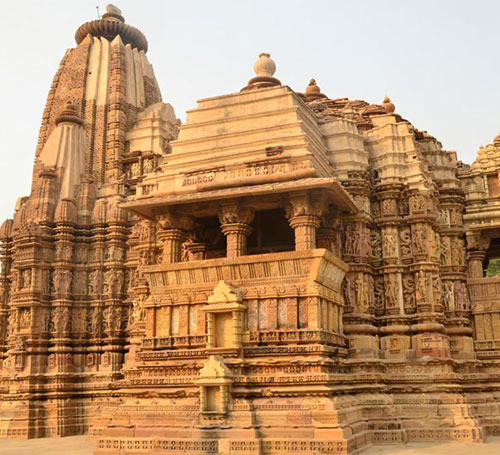
- : Khajuraho, Chhatarpur District, Madhya Pradesh, Pin ? 471606 India.
- : Nearest airport: Khajuraho Airport (3.2 km); nearest railway station: Khajuraho (5.9 km)..
- : 8 am to 6 pm daily.
- : 4 to 5 hours..
- : October to March..
- : Many budget and luxury hotels, resorts are available here..
 Basic info
Basic info
The temples of Khajuraho are considered the greatest masterpieces and the purest examples of the glorious Indian art and architecture. This group of magnificent temples was constructed during the reign of the Rajput Chandelle Dynasty between 950 ? 1050 AD. It took more than a hundred years to build these majestic monuments. Mainly, the finest quality sandstone and granite were used to construct these temples. There were originally 85 temples covering an area of over 21 sq. km but today, only 20 temples are there in the complex, which are divided into three groups ? the Western Group, the Eastern Group, and the Southern Group of Temples. These temples are dedicated to different Hindu and Jain gods and goddesses like Lord Shiva, Lord Vishnu, Lord Ganesha, Lord Surya, and Jain Thirthankaras, and represent the traditions of two religions ? Hinduism and Jainism. The Kandariya Mahadeo Temple, devoted to Lord Shiva is the largest one and the Chausat Yogini Temple built in the 9th century is the oldest one in the complex. The Eastern Group of Temples includes the 4 Jain temples ? Parasvanath, Adinath, Shantinath, and Ghantai Temples. Most of the shrines that stand in the complex today were created during the rule of kings Yashovarman and Dhangadeva. Unfortunately, most of the temples were destroyed by the Muslim invaders and due to sheer neglect. However, the British surveyor T.S. Burt rediscovered the temples in 1830 and since then, efforts were taken to restore and preserve these architectural gems. Many foreign travelers and archaeologists visited these temples and made them known to the world. This group of monuments are maintained by the Archeological Survey of India and has been declared a UNESCO World Heritage Site. These ancient temples present aesthetics through their awe-inspiring sculptures, intricate designs, and architectural elegance and are a wondrous art form created by the unknown craftsmen of the 10th century. These monuments are adorned with numerous erotic sculptures that depict all kinds of human emotions in an outstanding way, which are considered as marvels of architecture and are hard to find anywhere in the world.
 Tourist attractions
Tourist attractions
Kandariya Mahadev Temple, Chausath Yogini Temple, Matangeshwar Temple, Adinath Temple, Parasvanath Temple, Lakshmana Temple, Devi Jagdamba Temple, Chaturbhuj Temple, Shikharas, Nandi Statue, Statue of Varaha, Sardula Statue, Surasundaris, Khajuraho Sound and Light Show, etc.
Krishnapura Chhatri, Madhya pradesh.
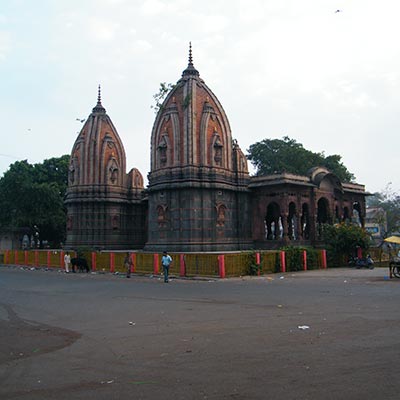
- : Mahatma Gandhi Rd, Rajwada, Maharaja Tukoji Rao Holker Cloth Market, Indore, Madhya Pradesh 452007.
- : By hiring the service of the local transit, an individual can reach Krishnapura Chhatri conveniently..
- : 9am-5pm
- : 1-2 hrs.
- : Throughout the year.
- : Budget & Luxury Hotels available..
 Basic info
Basic info
Krishnapura Chhatri is three chattris situated in Indore, Madhya Pradesh. As the cenotaphs were established by Holkars to house the remains of the dynasty’s rulers, these are also referred to as Holkar Chattris. The complex has three chhatris and five cenotaphs. Built of different types of stone, the chhatris have elaborately carved out columns and exteriors.
Lal Bagh Palace, Madhya pradesh.
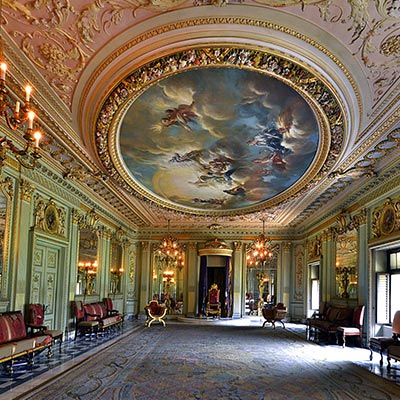
- : Nai Duniya, Revenue Colony, Indira nagar, Indore, Madhya Pradesh 452007.
- : One can easily reach it by taxi or a cab which are available at both- the railway station and the bus stand..
- : 10:00 AM - 5:00 PM (Closed on Mondays )
- : 1 hour.
- : September to April.
- : Budget & Luxury Hotels available..
 Basic info
Basic info
Spread across an area of 28 acres, Lal Bagh Palace is a fine specimen of architectural magnificence. In earlier days, it used to be the residence of the Holkar dynasty. But now it is more of a museum where one can spot artifacts of the Maratha Empire and the Holkar dynasty. The museum also a rare coin collection, dating back to the Mughal period. The palace features Italian marble columns, Persian carpets, Belgium stained glass windows, Greek mythological reliefs, flying nymphs on the ceiling, etc. In all, the palace is a must-visit spot during the tour to Indore.
Lower Lake, Madhya pradesh.
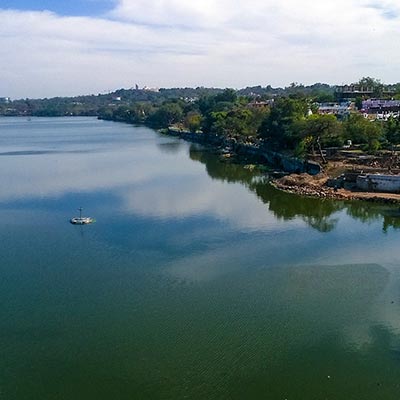
- : Jahangirabad, Bhopal, Madhya Pradesh, 462003, India.
- : The local buses and auto-rickshaws to Lower Lake are easily available from every part of the city..
- : 9:00 AM - 5:00 PM
- : 1 hour.
- : October to April.
- : Luxuries to budget hotels are available..
 Basic info
Basic info
Lower Lake or Chhota Talaab is a lake in Bhopal. It forms the Bhoj Wetland along with Upper Lake. The lake was established by Chote Khan in 1794 for the beautification of Bhopal. Having the catchment area of 9.6 sq. km, it is spread across 1.29 sq. km. As it does not have any freshwater source, it receives seepage water from Upper Lake and drainage from 28 sewage-filled nullahs. The water is not fit for drinking because the lake is eutrophic.
Orchha Fort Complex, Madhya pradesh.
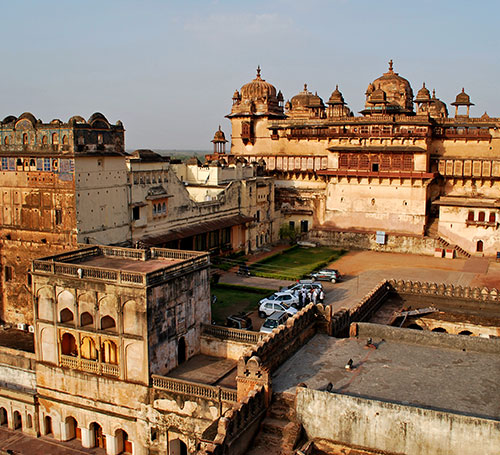
- : Orchha, Tikamgarh District, Madhya Pradesh, Pin - 472246, India..
- : Nearest Railway Station: Jhansi (19.2 km) & Nearest Airport: Gwalior (134.6 km)..
- : 8 am – 6 pm, open every day.
- : 2 to 3 hours.
- : October to March..
- : Many budget and luxury hotels, resorts are available here..
 Basic info
Basic info
The Orchha Fort Complex, one of the most popular visiting places, is located in Orchha, the oldest town of Madhya Pradesh. The fort complex is situated in the center of a beautiful natural island of River Betwa and Jamni. The fort was built by the King of Bundela Rajput Dynasty, Rudra Pratap Singh in the 16th century. Later, various kings of the Rajput Era built many structures inside this complex, like the Raja Mahal, Jahangir Mahal, Rai Praveen Mahal, Sheesh Mahal, Phool Bagh, Ram Raja temple, Lakshmi Narayan Temple, and many more. The architecture of this complex is unique, which was designed by following the Indian, Islamic, and Rajput styles. The fort was constructed by stones and small red bricks and all the walls, balconies, and corridors are decorated with religious themes and Mural paintings, which brilliantly portray the culture of the Rajput era. The most important tourist attraction of this fort complex is Raja Mahal, also called “King’s Palace”, located in the center of the complex, was built by the Rajput King Madhukar Shah in the 17th century. It is a dark colored building, ornamented with lots of religious themes, images of Gods and Goddesses, etc. A part of this Mahal area was converted into Rama Raja Temple, where Lord Rama is worshipped as the King of Ayodhya. Another visiting place in this complex is Jahangir Mahal, built by Bir Singh Deo in 1605, is a four-storied, splendidly designed building with elegant Mughal architecture, constructed in the honor of Mughal Monarch Jahangir. Today, this is considered as a small historical museum. Rai Parveen Mahal, another interesting spot in this complex, was built by King Indrajeet Singh in 1618, for Queen Rai Parveen. Other tourist attractions are Sheesh Mahal, built by King Udit Singh, now has been converted to a hotel.
 Tourist attractions
Tourist attractions
Every evening, visitors can enjoy the stunning sound and light show, which starts from around 7 pm in the fort premises.
Rajwada Palace, Madhya pradesh.
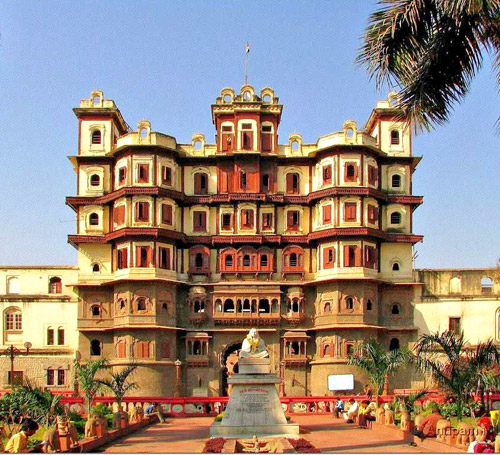
- : Rajwada, Indore, Madhya Pradesh, Pin - 452002, India..
- : Nearest Railway Station:- Indore Junction - 1.9 km & Nearest Airport:- Devi Ahilya Bai Holkar - 5 km..
- : 10 am - 5 pm, all days of the week.
- : 30 minutes to 1 hour..
- : October to March is the best season..
- : Many budget and luxury hotels, resorts are available here..
 Basic info
Basic info
The Rajwada Palace is a famous historical tourist attraction, located in the center of Indore city. It is also known as ?Holkar Palace?, as it was built by Malhar Rao Holkar, the founder of Holkar Dynasty, in 1747 AD. He resided in this palace till 1880 AD. The palace is the oldest structure in Indore, which till contains the beautiful style and architecture of that era. In the recent past, in March 2007, H.H. Ushadevi Holkar, the Maharani of Indore, decided to reconstruct the building. At present, the building is managed by the Archaeological Survey of India and they opened an office and gallery inside the building. The building?s architecture follows the French, Mughal, and Maratha styles. When you see the building from the southern side, it will look like a Mughal building and from the eastern side like European. This is a seven-storied building; the top three floors of which are made of wood and the bottom three floor are made of stone, painted in dark brown color. The entrance of the building starts with a large wooden gate with stone decoration, shows the typical Maratha style. The decoration and design of all the corridors, balconies, and windows have been done by using the Mughal and Maratha style. The main complex also has a manicured garden, a statue of Queen Ahilya Bai, some beautiful fountains, and a man-made waterfall.
 Tourist attractions
Tourist attractions
There is a museum in the palace complex, where different types of swords, photos, and paintings of the Holkar Dynasty are displayed.
Another tourist attraction is the Light and Sound show, which takes place every evening at around 6.30 pm for 45 minutes.
Rock Shelters of Bhimbetka, Madhya pradesh.
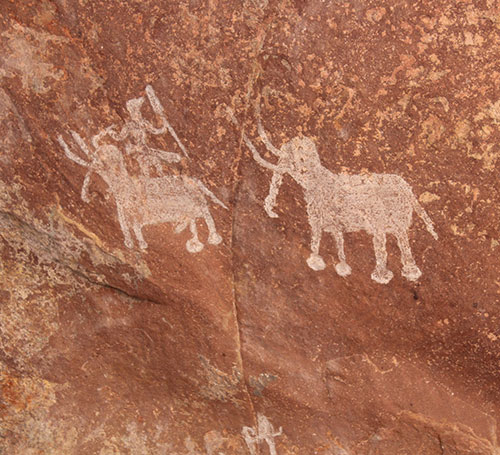
- : Bhojpur, Raisen District, Madhya Pradesh, Pin - 464990, India..
- : Nearest airport is Raja Bhoj Airport (57 km); nearest railway station is Hoshangabad (36.6 km)..
- : Every day from 7 am to 6 pm.
- : 5 - 6 hours..
- : The period from July - April is the best time to visit..
- : Many budget and luxury hotels, resorts, farmhouses are available here..
 Basic info
Basic info
Situated in the foothills of the Vindhyan Mountains, Rock Shelters of Bhimbetka was declared as a UNESCO World Heritage Site in 2003. These groups of rock shelters contain paintings of the Mesolithic Period. The rock shelters were discovered by Dr. V.S. Wakankar in the year 1957. According to legends, the word “Bhimbetka” is derived from “Bhimbaithka”, which is the sitting place of Bhim, one of the five Pandavas from Mahabharata.
There are 760 rock shelters, out of which in 500, you will find beautiful paintings adorning the walls. The paintings found in these rock shelters have a resemblance to those found in Kakadu National Park, Australia.
It might be surprising to know that these caves have evidence of the life of people belonging to the Stone Ages. The earliest prehistoric cave paintings found here are almost 30,000 years old. The paintings are related to various themes covering birds and animals, hunting, agriculture, and tribal dance forms. For someone interested in knowing more about the lifestyle and culture of the people belonging to the Paleolithic and the Mesolithic periods, these caves are a must visit site. These caves also house the oldest known rock art, in the entire Indian subcontinent, and the world’s oldest stone walls and floors.
 Tourist attractions
Tourist attractions
The Auditorium Cave is one of the most popular caves here, which is surrounded by quartzite towers. There is a painting of a red bison attacking a man, which is visible only when the sunlight is just right, and hence, this painting creates a lot of interest among the tourists.
Sair Sapata, Madhya pradesh.
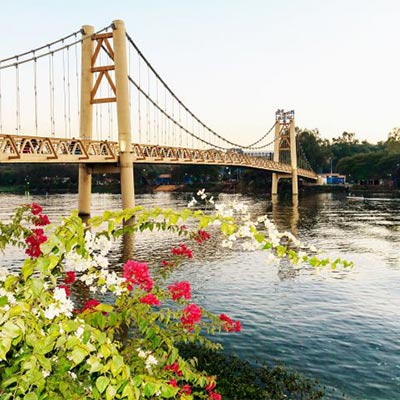
- : Bhadbhada Road, Prempura, Bhopal, Madhya Pradesh 462044.
- : The place can be reached by road, taxi or bus..
- : 11:00 AM - 10:00 PM
- : 2-3 hours.
- : October to March.
- : Budget & Luxury Hotels are available..
 Basic info
Basic info
Positioned on the banks of the Upper Lake, Sair Sapata is a tourism and entertainment complex in Bhopal. Covering an area of 24.56 acres, it was developed by the Madhya Pradesh State Tourism Development Corporation. The complex has children’s play area, toy train, suspension bridge, musical fountain, etc. Visitors can also enjoy boat rides in small pedal boats. Moreover, there are many viewpoints, food kiosks, a restaurant, and many other attractions. In all, the spot aims at promoting the tourism of Madhya Pradesh.
Sasbahu Temple, Madhya pradesh.
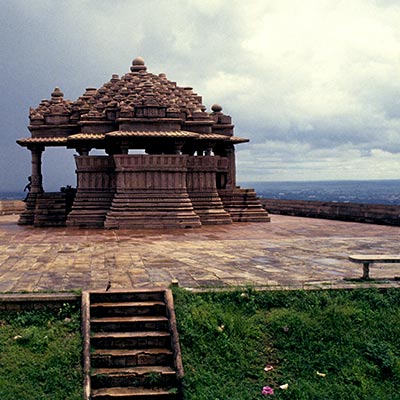
- : Fort Campus, Near Post Office, Madhya Pradesh 474001.
- : The nearest airport is Gwalior Airport which is 11.73 KM away and 3.25 KM away from Ghosipura Railway Station..
- : 8:00 am to 6:00 pm
- : 1 hour.
- : October to March.
- : Luxuries to budget hotels are available..
 Basic info
Basic info
Known by multiple names, Sasbahu Temple is the 11th-century twin temple in Gwalior, Madhya Pradesh. It was established by King Mahipala of the Kachchhapaghata dynasty in 1093. Located in Gwalior Fort, the temples are in ruins today but still manage to attract a large no. of tourists. It is suggested that the temples had a North India Bhumija architectural style. Dedicated to Lord Vishnu, both temples have intricate carvings on interiors as well as exteriors.
Shri Mahakaleshwar Jyotirlinga Temple, Madhya pradesh.
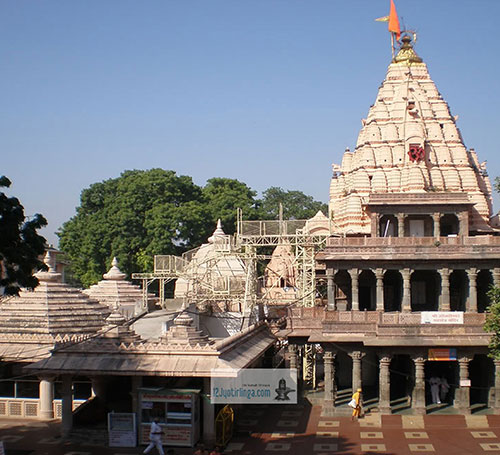
- : Jaisinghpura, Ujjain, Madhya Pradesh, Pin - 456006, India..
- : Nearest airport: Indore (53 km); nearest railway station: Ujjain Junction (1.7 km)..
- : 4 am to 11 pm, every day.
- : 1 to 2 hours..
- : best season October to March..
- : Many budget and luxury hotels, resorts are available here..
 Basic info
Basic info
This famous Hindu shrine, located beside the Rudra Sagar Lake in the ancient city of Ujjain, houses one of the twelve Jyotirlingams and is considered as one of the holiest abodes of Lord Shiva. In this temple, it is believed that the Lord resides in the form of Swayambhu. The lingams of Lord Mahakaleshwara, Omkareshwara, and Nagachandreshwara are placed in this three-storied temple. Here, the lingam of Mahakaleshwar faces south and hence, is known as ‘Dakshinamurti’. Another unique feature is that this temple houses the largest lingam of Lord Mahakaleshwar among all other Jyotirlingas.
The present temple of Mahakaal was built in the 18th century by the Maratha General, Ranoji Scindia. The architecture of this temple is a blend of Bhumija, Chalukya, and Maratha architectural styles.
Above the shrine of Mahakaleshwara, the sanctum of Omkareshwara is placed. And on the third floor, the idol of Nagchandreshwar is housed but, this idol can be viewed by the devotees only on Nag Panchami. In the western, northern, and eastern sides of the sanctum sanctorum, the idols of Lord Ganesha, Goddess Parvati, and Lord Kartikeya are placed. In the southern part of the shrine, you will find the statue of Nandi Bull. There is a huge courtyard around the temple. The Shikhar of this shrine is embellished with intricate carvings and sculptures. Inside the temple complex, there is a large water tank (Kunda), known as Koti Tirtha and it is considered very sacred.
Within the temple complex is the Shri Swapneshwar Mahadev Temple, where Lord is worshipped as Swapneshwar.
 Tourist attractions
Tourist attractions
A large fair is held on the occasion of Maha Shivaratri.
Shri Omkareshwar Jyotirlinga Temple, Madhya pradesh.
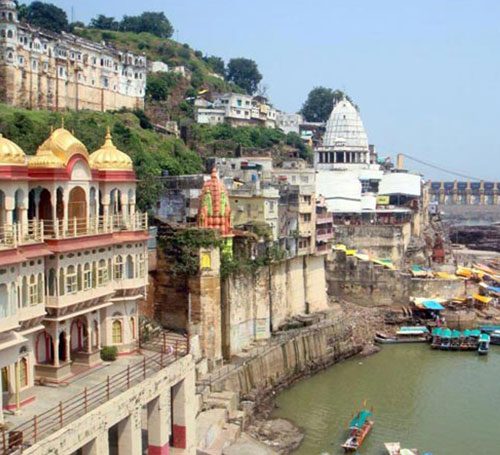
- : Omkareshwar Mandir Road, Shivpuri, Mandhata, Khandwa District, Madhya Pradesh, Pin - 451115, India..
- : Nearest railway station: Omkareshwar Road - 11.8 km; nearest airport: Devi Ahilya Bai Holkar Airport - 77 km..
- : 5 am - 10 pm, all days a week.
- : Around 2 hours..
- : October to March is the ideal season to visit..
- : Many budget and luxury hotels, resorts are available here..
 Basic info
Basic info
Omkareshwar Jyotirlinga is a famous Shiv temple, situated on an island in the center of River Narmada. The shape of this island is like the Hindu religious word ?Om?, hence, it is named ?Omkar Mountain? and ?Omkareshwar?. The island covers an area of around 2.6 sq. km and tourists can reach there by a boat ride. In the whole world, there are 12 Jyotirlinga temples situated and Omkareshwar Jyotirlinga is one of them. Omkareshwar is a Hindu religious city decorated with around 100 temples. In this holy city, there are two main temples ? Omkareshwar and Amareshwar. Amareshwar Temple is located in the south bank of river Narmada and is also known as Mamleshwar Temple. In the main Omkareshwar Temple complex, there is a grand Sabha Mandap for prayer, which is around 14 feet high with 60 large pillars, made of brown stones. The temple has 5 floors and each floor has different idols of gods and goddesses. On the first floor, Mahakaleshwar Temple is situated with the idol of Goddess Narmada. On the 3rd, 4th, and 5th floor of Omkareshwar Jyotirlinga, the Siddnath, Gupteshwar, and Dhwajeshwar temples are situated respectively. Many pilgrims from pan India come here and join different pujas and offer sevas to Lord Shiva and Goddess Narmada in different ways, some of which are Maha Rudrabhishekham, Laghu Rudrabhishekham, Narmada Arti, Bhagavan Bhog, Tuladaan, Parthiv Shivling Puja, and many more.
 Tourist attractions
Tourist attractions
The other nearby tourist attractions are Saptamutraka Temple, Gauri Somnath Temple, Sri Annapurna Temple, etc.
Taj-ul-Masajid, Madhya pradesh.
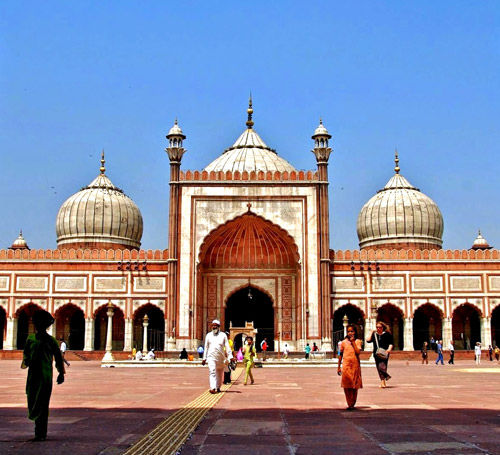
- : NH 12, Kohefiza, Bhopal, Madhya Pradesh, Pin 462001, India..
- : Nearest Railway Station:- Bhopal Junction - 3.1 km & Nearest Airport:- Raja Bhoj Airport, Bhopal - 9.5 km..
- : 6 am - 8 pm, all days but, non-Muslims are not permitted inside on Fridays.
- : Around 2 hours.
- : can be visited throughout the year but the best time is winter..
- : Budget and luxury hotels, resorts are available here..
 Basic info
Basic info
The meaning of "Taj-ul-Masajid" is the "Crown of Mosques", which is a famous historical construction, situated in the center of Bhopal, the historical capital of Madhya Pradesh. This antique and elegant landmark is one of the main tourist attractions in Bhopal, and it is the largest Muslim mosque in India, the second largest in Asia and third largest in the world. The construction of this famous masjid was started by Nawab Shah Jahan, Begum of Bhopal and her daughter Sultan Jahan Begum in 1844, but in around 1857, the construction work stopped due to the 1857 war and the shortage of fund. Later again in 1971, Allama Mohammad Imran Khan Nadwi Azhari and Maulana Sayed Hashmat Ali Saheb of Bhopal started the construction again. In 1985, the construction was completed by the Prince of Kuwait to honor the memory of his expired spouse.
The large structure covers around 430,000 square feet area and it has the ability to accommodate around 175,000 people. The mosque has three domes, which are made of white marble and two octagonal 18-storied Minarets, constructed by red stone. In the entrance of the main building, there is a two-storied big gate made of red stone and in between the main building and gate, there is a water tank, called Motia Talab. Another attraction of this Masjid is the prayer hall, which is located at the center of the structure, designed by many paintings and wall decorations of different Muslim cultures. The remarkable architecture of this building is similar to the great Jama Masjid and the Badshahi Mosque of Lahore, which is a combination of Mughal and Indo Persian architectural styles.
Teli Ka Mandir, Madhya pradesh.
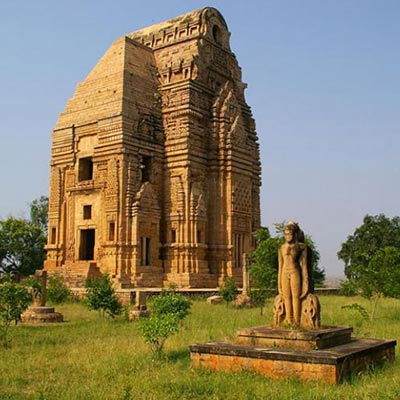
- : Fort Campus, Near Schiendhi School Gwalior Fort, Madhya Pradesh 474001.
- : One can easily reach Teli Ka Mandir by taking local Buses, Autos or by hiring Taxis from Gwalior.
- : All days of the week: 8:00 AM - 6:00 PM
- : 1 hour.
- : October-March..
- : Budget & Luxury Hotels available..
 Basic info
Basic info
Also called Telika Temple, Teli ka Mandir is a Hindu temple in Gwalior, Madhya Pradesh. Situated within the Gwalior Fort, the temple is dedicated to Vishnu, Shiva, and Matrikas. The temple is unique because of its rectangular sanctum. The same thing makes the temple the oldest one surviving Hindu temple in Central India.
Tomb of Tansen, Madhya pradesh.
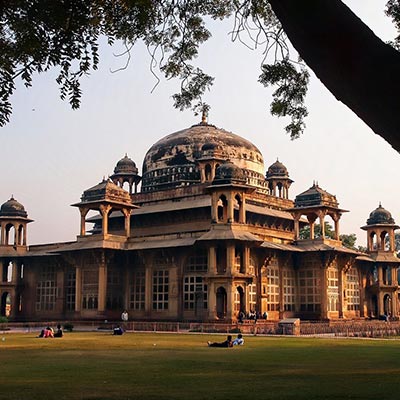
- : Gwalior,, Tansen Nagar, Gwalior, Madhya Pradesh 474002.
- : The nearest railway station is the Gwalior Train Junction.
The nearest airport is the Maharajpur Air force Base Airport.. - : 9am-6pm
- : 30 minutes to 1 hours.
- : October-March..
- : Budget & Luxury Hotels available..
 Basic info
Basic info
Tansen was one of the nine gems in the Mughal court. Besides, he was one of the greatest musicians of India and an eminent vocalist in the court of the Mughal Emperor Akbar. The music of Tansen was so soulful that it could cause rains and even enchant the animals. He learned Hindustani classical music from Mohammad Ghaus. He used to follow Dhrupad style and he developed the Gwalior Gharana style of music. The tomb of Tansen is located near the tom of his guru (Mohammad Ghaus) and is an architectural marvel. An annual music festival, Tansen Samorah is held near the tomb, during which musicians and vocalists from all across the country come together to perform classical shows.
Van Vihar National Park, Madhya pradesh.
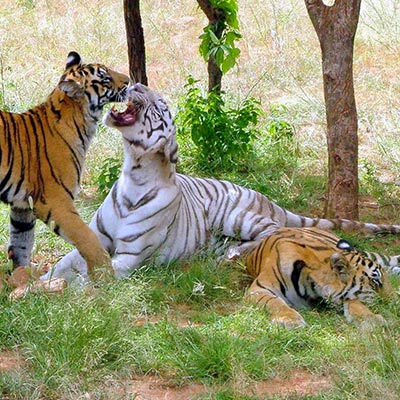
- : Lake View Walk Path, Krishna Nagar, Shymala Hills, Bhopal, Madhya Pradesh 462002.
- : Arranging own transport is recommeded like hiring auto rickshaw or private taxi. The nearest Public Transport Bus Stop are Bhadbhada Bridge for Ramu Dwar and Kilok Park for Chickoo Dwar. .
- : April - July: 6:00 AM - 7:00 PM
August - October: 6:30 AM - 6:30 PM
November - 15th February: 6:30 AM - 6:00 PM
16th February - April: 6:30 AM - 6:30 PM - : 3-4 Hours.
- : July and September..
- : Luxuries to budget hotels are available..
 Basic info
Basic info
Located in Bhopal, Van Vihar National Park is a national park covering an area of 4.45 sq. km. the carnivores are kept in captivity just like the animals in the zoological park while herbivores are allowed to roam freely. Some of the major animals found in Van Vihar National Park are Asiatic lion, Bengal tiger, Asiatic wildcat, Sloth bear, Red fox, Indian jackal, wild dog, mongoose, Nilgai, Wild boar, Red monkey, common langur, etc. The park is also home to about 200 species of birds.
